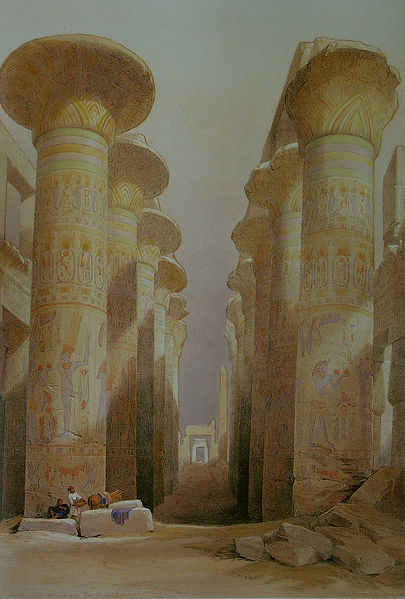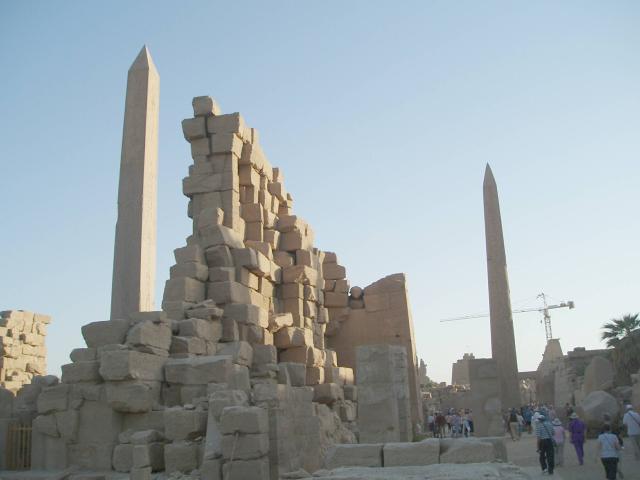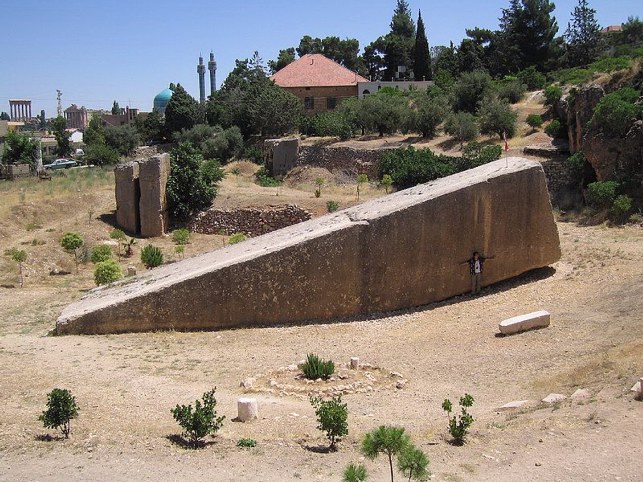Ancients built pyramids, temples, majestic columns, colossal statues, quarried and moved huge blocks of stone. How did they do it?
Baalbek in its foundation walls preserves the more important ruins of the ancient Phoenicians now existing. Tyre, Sidon. Carthage — all have disappeared utterly from the earth and nothing now remains to the knowledge of mankind of the great Phoenician civilization excepting the architectural wonders which crown the Acropolis of Baalbek.The mighty substructure of the temple platform is of such vast proportions as almost to eclipse our power of comprehension. Imagine, if you can, a solid platform of masonry over 1000 feet long. and 300 feet wide.The outer walls of which contain three giant stones, each five times as large as an ordinary freight car. Scores of great stones, so common as to be hardly noticeable measure twenty, thirty or even forty feet in lengths and twelve feet square, and above them, resting end to end, are the three famous monoliths, which, have for ages reckoned among the wonders of the world. Each stone measures sixty-four feet in length by thirteen feet in height and the same in thickness. Stood upon end, each one of these giant stones would reach to the roof of a four-story building while its cubic measurement would be that of a good sized six room house. Each of these wonderful stones is estimated to weigh 1000 to 2,000,000 pounds. How such gigantic masses of granite could be transported three-quarters of a mile, from a deep quarry in the valley, carried up a steep hillside and then raised over twenty feet in the air is more than our amazed faculties are able to conjecture. No man knows today the nature of the Phoenician temple which crowned this mighty substructure, but the thought that lt may have been built in the same heroic proportions is almost appalling.
After the fall of the Grecian heliopolis, the Romans, under Antoninus Pius, erected here upon these mighty walls one of the grandest temples that ever graced their worldwide empire. The ruins of this temple are still the marvel of the world, and all Rome does not hold an ancient monument so imposing as this majestic Temple or Jupiter and the Sun at Baalbek. Before this noble group of ruins the beholder pauses, utterly bewildered by the majesty of the conception and the grandeur of the execution of this mightiest of Roman temples, which still lifts its marble walls among the desolate mountains of this far Asiatic province. On the road which leads from Baalbec to Zahle and at a distance of perhaps three-quarters of a mlle from the Acropolis lies the great quarries from which were obtained the colossal stones of the temple foundation. One gigantic monolith is still in the quarry — measuring 71 feet long, 14 feet high, 13 feet wide and weighing 1,500 tons— a wonder for all ages to come, just as it was left by the quarrymen over four thousand years ago! Who can tell .what great world tragedy stopped that mighty stone on its way from the quarry up to that wondrous temple on the hill. A war, or a pestilence, perhaps, that devastated the land of Phoenicia or possibly, a great earthquake which tumbled their mighty temple and stopped the work of the builders for all time.
More marvelous even than these Phoenician monoliths are the huge.obelisks and the colossal statues of ancient Egypt in view of the long distances over which they were transported and the great heights to which they were sometimes raised. Egypt is a land of mighty things. We are amazed upon every hand by the evidences of the glory of the dead nation. The cyclopean masonry of Karnak awes the beholder into silence and the vast Necropolis of Memphis, the appaling immensity of the pyramids, the peerless grace of the philae, and the wonders of the Valley of the Tombs in the land of the Pharaohs. With the one exception of that vast group of temples among the lonely Syrian mountains the world has never seen, and perhaps may never seen again, such awesome sepulchers for a nation's kings as those whose ruined glories still grace the desert sand's of the ancient Land of Khem. The grandeur of Egypt's colossal ruins can never be exaggerated. The lonely shrines of Philae, the solitary of Edfou and the overwhelming sublimity of Karnak's mighty pylons and the Hall of Columns are even beyond the power of words to describe. The great temples which were the glory of ancient Egypt are distributed along the whole valley of the Nile; and, carven on the upon the walls of at least three-fourths of them may be seen the cartoush of the famous builder king Rameses Il. The great Sesostris and his multitudes of peerless workmen have slept the sleep of the ages, but their woundrous temples remain today, after 3400 years to amaze the architects and builders of this boastful and progressive twentieth century.
The world famed quarry of Assouan was the birthplace of all the Egyptian temples; and the transportation of some of the ponderous stones used in their construction may be reckoned among the wonders of ancient world. Single obelisks and monolithic statues weighing upward of 1000 tons were taken from the great quarry and transported hundreds of miles down the Nile to grace the temples of tower Egypt. Thebes, Edfou, Dendereh, Abydos, Memphis and the Heliopolis - all owed their sculptured wonders to the great quarries of Assouan. At Memphis, prostrate in their lonely majesty and deep in the forest of palms lie two colossal statues measures 42 feet in length and weighs not far from 400 tons. Thebes 188 miles north of the cataract, is full of granite marvels from these famous quarries, chief of which may be mentioned the colossal statue of Rameses II in the Memnonium, which weighed nearly 1000 tons, and the two great obelisks of Queen Hatasu, in the temple of Ammon at Karnak, each one of which weighs over 1,000,000 pounds. All of these great stones were brough from Assouan, and the hieroglyphic inscriptions upon the base of the great Queen's obelisks record that they were both cut from the quarry and transported to Karnak, a distance of 188 miles, carven with their hieroglyphic inscriptions, and erected in the temple of Ammon-Ra - all within the short space of seven months.


